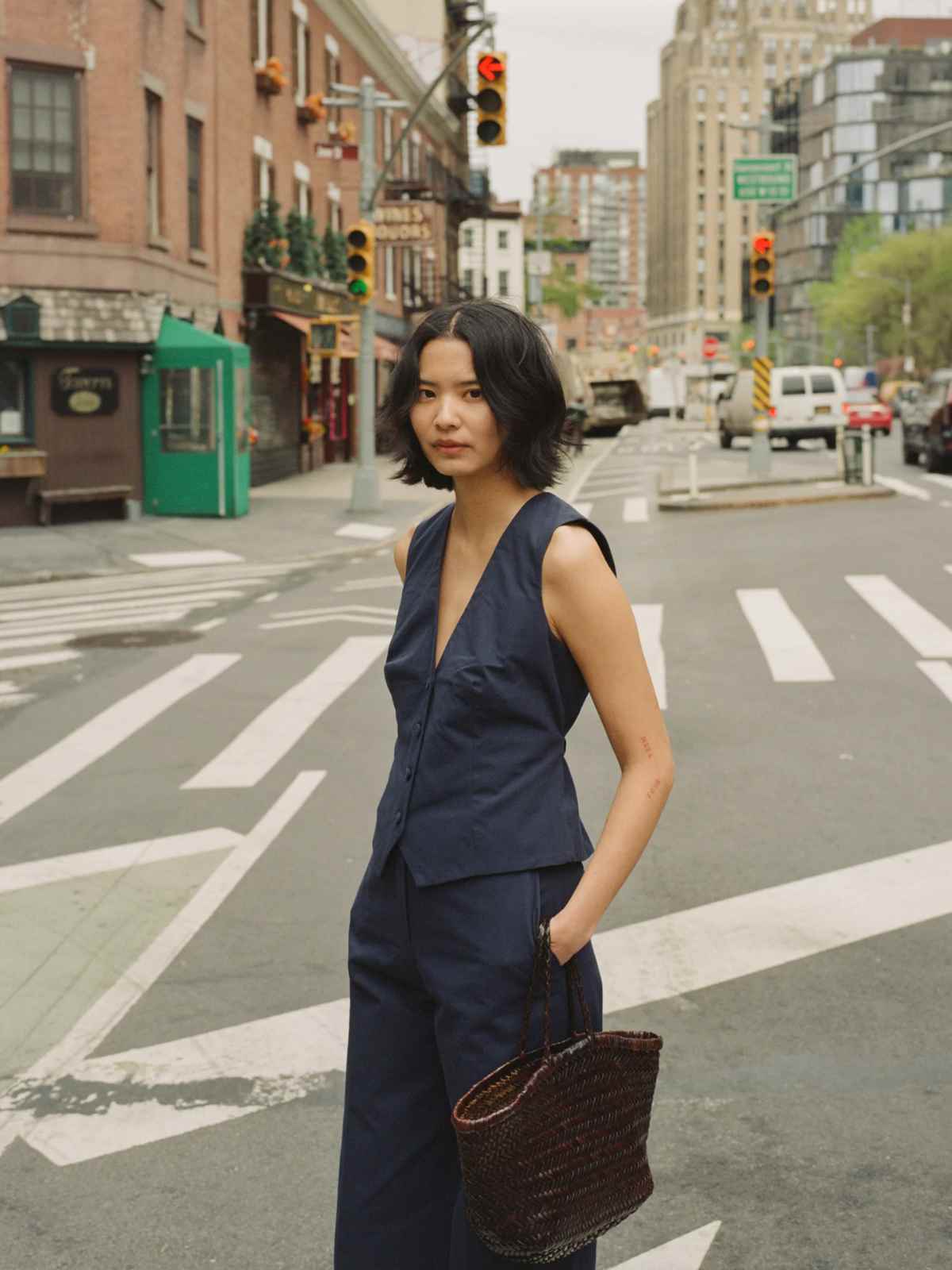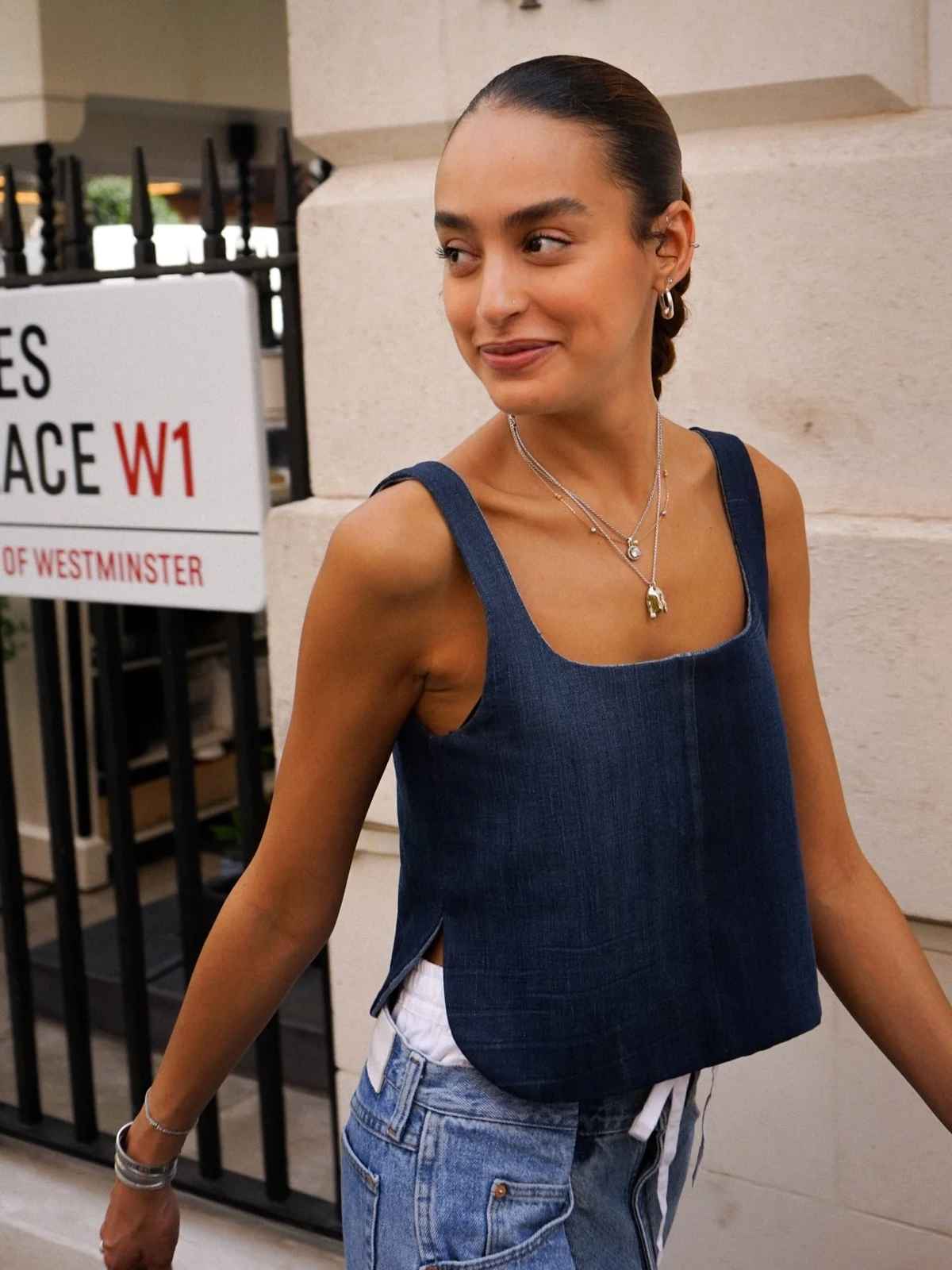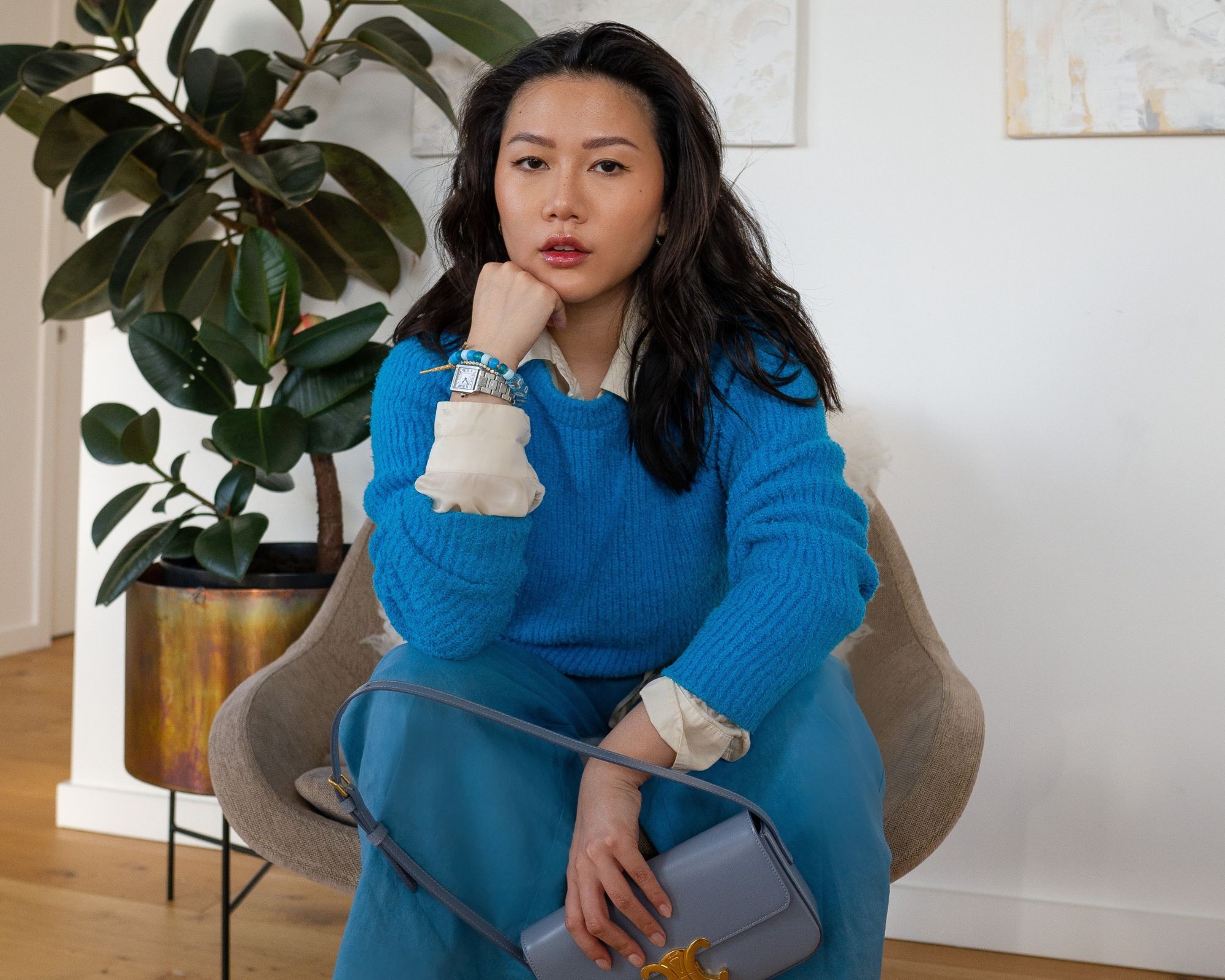In her new book Why Don’t I Have Anything to Wear? author Andrea Cheong sheds light on spending less, shopping smarter, and revolutionising your wardrobe. Cheong, creator of the Mindful Monday Method, talks us through an uncomfortable topic for many: how fashion has twisted our sense of self worth. Thankfully, she’s got a tips on where to go from here.
How our identities got tangled up in what we wear
One of the greatest challenges in working in the sustainable fashion space is the language we use. So often it’s in binaries or absolutes: “Just don’t shop fast fashion” or “How can you say you care about the environment if you’re still doing [insert behaviour here]?”. If you’ve ever experienced anything like the above, I can tell you that you’re not the problem. The problem with the kind of people that behave like this who also claim to be sustainability activists is that they’re closer to those street preachers yelling that we’re all going to hell than they are do-gooders.
More than that, I’ve always wondered why the conversation about “irresponsible shopping” seems to be so gendered, the onus almost always being placed on women. Dion Terrelonge, a fashion psychologist, believes that as infants, women are “taught to prioritise how we look and in particular, how we look to others”, as this becomes the basis of affirmation of our character and something that we internalise. On the other hand, men aren’t exposed to the same vocabulary. “They’re told from a young age, ‘Oh, aren’t they rambunctious? Aren’t they so smart? Aren’t they creative?’ They get feedback that is more about their internal states and who they are and their skills,” she adds.
So if women are more likely to view their aesthetic preferences as an extension of who they really are, we are also far more susceptible to taking fashion incredibly personally. As if we really are what we wear. I’m here to tell you that there is nothing wrong with buying something we want but know that we don’t need. The only problem with that picture is that so often we forget that objects are there to serve our needs, not the other way around. When things aren’t in the right order, you’ll find that we start to build our identity on very shaky ground: on the crumbling pedestals of brand association and aspirational but out-of-reach lifestyles.
An example of this might be an individual that prides themselves on having an impressive collection of shoes. They’re always in the know about design collaborations, which retailer has exclusive designs, and spends the majority of their disposable income on this collection. These factors in themselves aren’t a problem, they’re an interest and a pretty cool one at that. The point where that person stops wearing the shoes and the shoes begin to wear them is when their identity and self-worth is tied to the ownership of these things. Instead of using fashion to articulate ourselves, we become walking advertisements for an array of brands and tell ourselves that “those who get it, get it and those that don’t, don’t”.
Terrelonge tells me that one of the healthy ways individuals can relate to fashion and their personal style is if “they’re able to use clothing confidently to reflect who they are. They’re not trying to dress for other people and they’re looking internally at themselves rather than externally”, thereby viewing themselves not through the lens of another but through understanding who they are.
Take a look at the exercise below and reconnect with who you are.
Exercise: aligning self-love and your image
1. Grab a notebook or—perhaps more realistically for a lot of us—the notes app on your phone.
2. Write down three things that you value about yourself that aren’t based on physical attributes.
3. Write down three things that fashion makes you feel emotionally. Some of these prompts may help:
When browsing garments online, are you mindlessly scrolling or do you feel present? What is the root of the emotion you feel as you do this?
When you look through your social media feed at fashionable individuals are you aware of your emotions? If so, what are they?
When you’re trying on clothes, what’s going through your mind?
I’ll bet you those two sets of answers didn’t overlap. It isn’t that surprising that being our best selves isn’t supported by our current models of fashion. When I asked my online audience to do this task, I discovered some interesting things. Very few people wanted to tell me three things that they valued about themselves, but I got far more responses when I asked them how clothes made them feel, which is arguably a more sensitive question.
Confronting the lies we’ve been sold
Ultimately, fashion makes people feel conflicted. So many respondents said it makes them feel “confident” but also “not good enough”, “too big/short” and “unattractive”. Fashion makes us feel “not quite right”.
Before I started my journey with sustainable fashion and established the Mindful Monday Method, I couldn’t even tell you three things I valued about myself. Old me would probably have given you a superficial answer, like how I value that my hair is always shiny. It was a way to avoid acknowledging that I really had no sense of self.
Now I can tell you that the three traits I like about myself are that I’m compassionate, creative, and self aware. And I can now say that my shopping choices reflect this.
However, in previous years, the best version of myself was very much hindered by my shopping choices. Fashion used to make me feel inadequate. It made me feel lonely. I’d think, “If clothes are meant to make you part of a tribe, where’s mine? Why can’t I see my taste reflected in what’s popular online?” Worse than feeling like an outsider, fashion made me feel out of control. So much of the problem comes down to how we separate our purchase decisions from the rest of our actions. I’m not making this into a moral or even an ethical point; I’m highlighting the need to reconcile the major discrepancies in our lives, at least the ones we have control over, in order to be at peace.
Remember how I said that you’re not the problem? Well, I’ll tell you what is: the idea that we have no way out of the mess that the fashion industry has accumulated through wilful ignorance. But there is an exit. Saying no to one bad garment at a time, rooted in the belief that it’s a choice as to whether we want our clothes to define us. We can check the care labels all we want. We can resist the siren call of Zara, avoid the temptation of Mango, and flee from the doorstep of H&M.
But if we don’t confront the truth that we are not what we wear, we will eventually succumb to the clever false promises of, say, a snake-print knee-high boot.




















